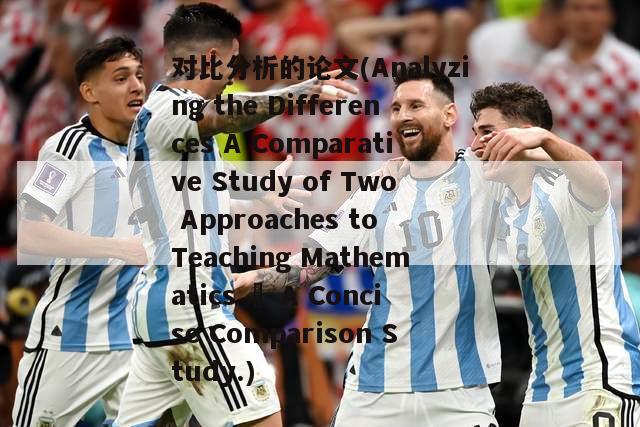
对比分析的论文(Analyzing the Differences A Comparative Study of Two Approaches to Teaching Mathematics – A Concise Comparison Study.)
Introduction
Mathematics education is a critical part of any education system. Over the years, various approaches have emerged to teaching mathematics. Two of the most common approaches are the traditional and constructivist approaches. While both approaches are designed to teach students mathematical concepts and skills, they differ in their teaching methods, learning outcomes, and student involvement. In this paper, we will compare and analyze the two approaches, highlighting their differences and similarities.
Traditional Approach
The traditional approach to teaching mathematics is teacher-centered and focuses on the transmission of information. In this approach, the teacher is the central figure, and the students listen to lectures and take notes. The teacher presents mathematical concepts and formulas, and the students are expected to memorize them. The emphasis is on accuracy and speed in solving problems.
The traditional approach also relies heavily on drills and memorization. Students spend a lot of time practicing and doing repetitive exercises to master mathematical skills. The focus is on rote learning, and students are not encouraged to explore mathematical ideas on their own. The traditional approach is highly structured and rigid, leaving little room for creativity and experimentation.
Constructivist Approach
The constructivist approach to teaching mathematics is student-centered and focuses on student exploration and discovery. In this approach, the teacher becomes a facilitator who guides students through the learning process. Students are encouraged to ask questions, solve problems, and discover mathematical concepts on their own.
The constructivist approach emphasizes active learning and hands-on activities. Students are encouraged to work in groups, discuss and share their ideas. The focus is on understanding and applying mathematical concepts in real-world situations. The constructivist approach is less structured and more flexible, allowing students to explore mathematical ideas in their own way.
Comparing Traditional and Constructivist Approaches
While both the traditional and constructivist approaches aim to teach mathematics, there are several differences between the two. Firstly, the traditional approach is teacher-centered, while the constructivist approach is student-centered. In the traditional approach, the teacher is the primary source of information, while in the constructivist approach, the teacher acts as a guide, allowing students to discover mathematical concepts on their own.
Secondly, the traditional approach relies on drills and memorization, while the constructivist approach emphasizes active learning and hands-on activities. Traditional teaching methods aim to instill knowledge in students through repetition, while constructivist teaching methods encourage students to understand the material by exploring and experimenting with it.

Thirdly, the traditional approach is highly structured and rigid, while the constructivist approach is flexible and less structured. Traditional teaching methods follow a set curriculum, while constructivist teaching methods allow students to explore topics that interest them and discover mathematical concepts in their own way.
Their Benefits and Limitations
Both approaches to teaching mathematics have their benefits and limitations. The traditional approach focuses on accuracy and speed, and its structured methods can help students develop strong problem-solving skills. However, the lack of exploration and experimentation may discourage some students and limit their creativity.
The constructivist approach, on the other hand, focuses on understanding and application, allowing students to discover mathematical concepts on their own. The hands-on approach can help students develop a deeper understanding of mathematical concepts and improve their critical thinking skills. However, the lack of structure may hinder some students who require more direction and guidance.
Conclusion
In conclusion, the traditional and constructivist approaches to teaching mathematics differ significantly in their teaching methods, learning outcomes, and student involvement. While both approaches have their benefits and limitations, educators need to choose an approach that best suits their students' learning needs and preferences. In the end, whatever approach they choose, the goal should be to help students develop their mathematical skills and understanding, preparing them for the challenges of the future.
版权声明
本文仅代表作者观点,不代表xx立场。
本文系作者授权xx发表,未经许可,不得转载。
 emc易倍平台·(中国)集团官方网站
emc易倍平台·(中国)集团官方网站








